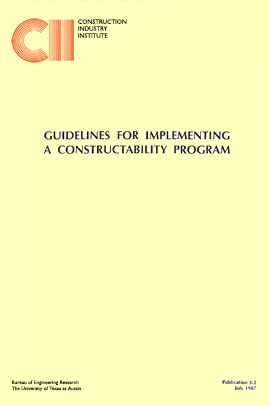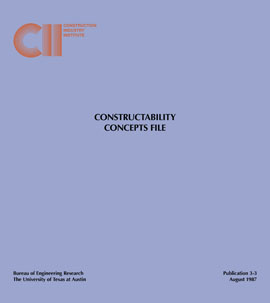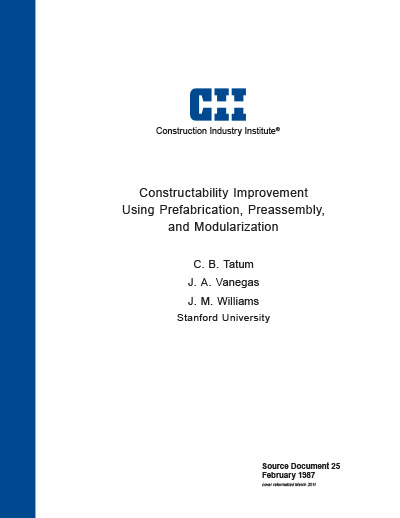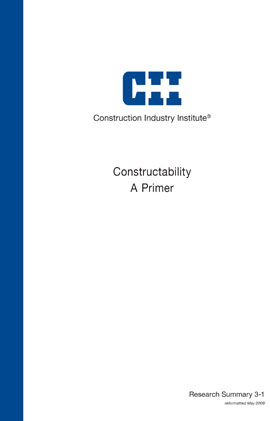
Guidelines for Implementing a Constructability Program
Constructability is evolving as one of the most significant enhancement opportunities in the construction industry. Although practiced for a considerable time by some organizations, only recently has it come into focus as offering major benefits in construction cost and schedule. The Business Roundtable’s Construction Industry Cost Effectiveness (CICE) Project identified constructability as an area with a major potential for improved cost effectiveness.
There is wide acceptance of the basic constructability premise that integration of construction knowledge and experience into planning and design is indeed beneficial. However, there is no single accepted methodology to achieve that integration which is at the heart of constructability. Implementing constructability is easiest on turnkey type projects; it is much more difficult on projects where design and construction are accomplished by distinct and separate contracts.
Traditional separation of engineering and construction early in the project must be bridged if constructability is to work. This bridging requires merging engineering and construction cultures, which have both commonalities and distinct differences. The challenge to management is to make that merger easily, automatically, and permanently.
This publication presents those ideas, steps, and procedures which have worked best in implementing constructability. It also contains additional suggestions from the task force as to what should work. Other planning and managerial issues which might be considered simultaneously with constructability are presented in the appendices.
The task force is convinced that constructability offers one of the greatest opportunities for improvement in our industry. The pressures of global competition leave no alternative but to adopt the changes that will make the U.S. construction industry as effective as possible. Constructability is one of those necessary and vital changes.
Consensus is that most successful constructability programs have a clear commitment of senior management, and a single point of sponsorship/leadership for the program. Typical constructability programs include:
- A company program that includes corporate policy, self-assessment, and training among other attributes. (RS3-2, p. 3)
- A project level program that customized the constructability effort to align with the needs of the project.
Although there is no need for a full-time constructability person or organization, there are three key roles within a constructability program:
- Executive Sponsor – the constructability champion to clearly communicate program commitment
- Constructability Manager – the constructability knowledge expert for the organization
- Database Custodian – maintains the “lessons learned” constructability database
The biggest obstacle to good constructability practice is the “review” syndrome. This occurs when construction personnel are excluded from the planning process and are invited only to “review” completed or partially completed products from design. This prevents construction knowledge and expertise input to the early planning, when cost sensitivity is at a maximum and construction should be making its most important contribution. When constructability is approached solely on a “review” basis, it inevitably becomes inefficient and ineffective. The most effective approach engages the entire constructability team with active roles in the planning and design development process. (RS3-2, p. 16)
For those companies that do not have established constructability programs, these guidelines offer several examples of suggested corporate constructability policy and procedures, project constructability organizational charts, lessoned learned, and constructability related savings templates. (Note: RS3-2 has been superseded by RS34-2 and should be used for informational purposes only.)



